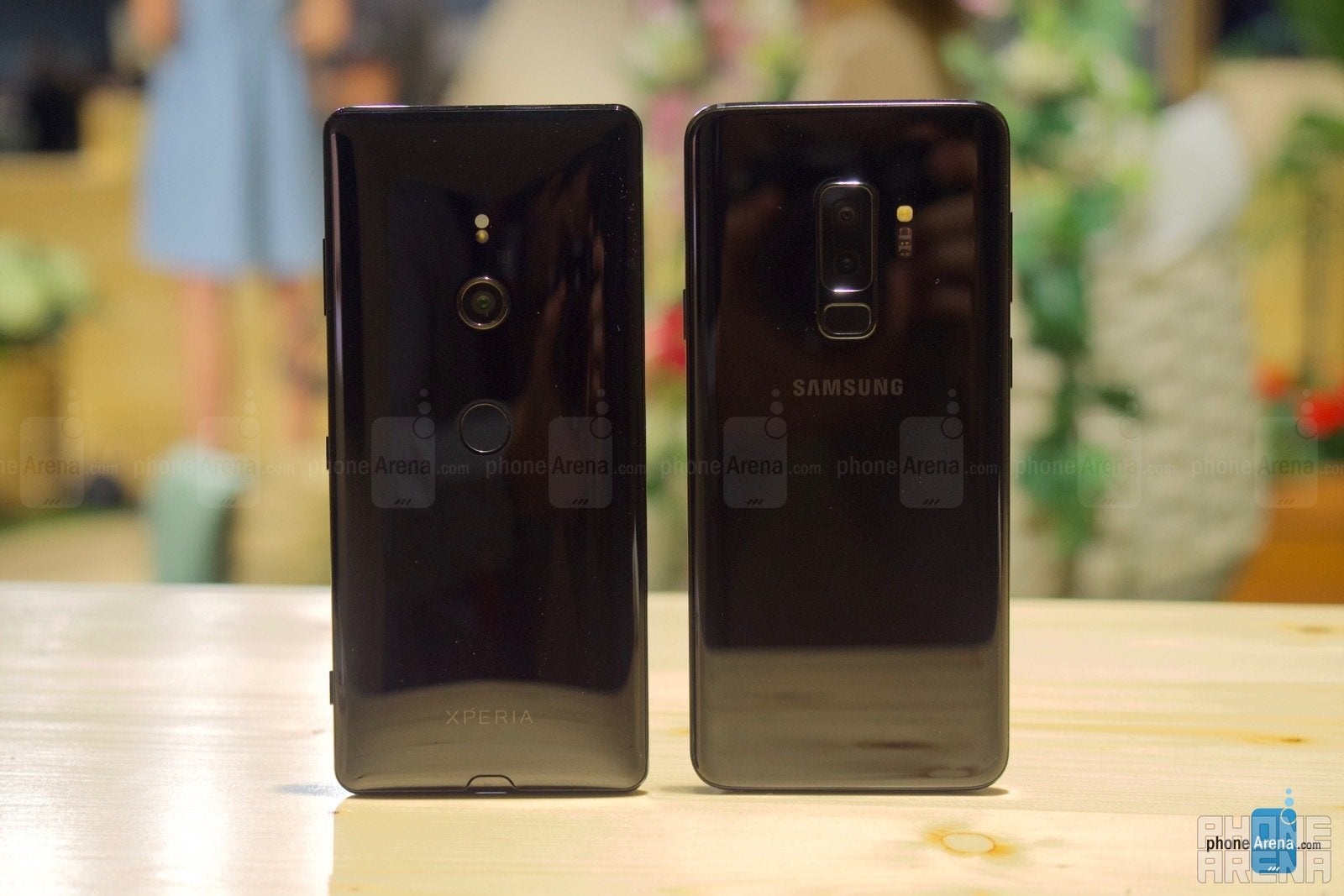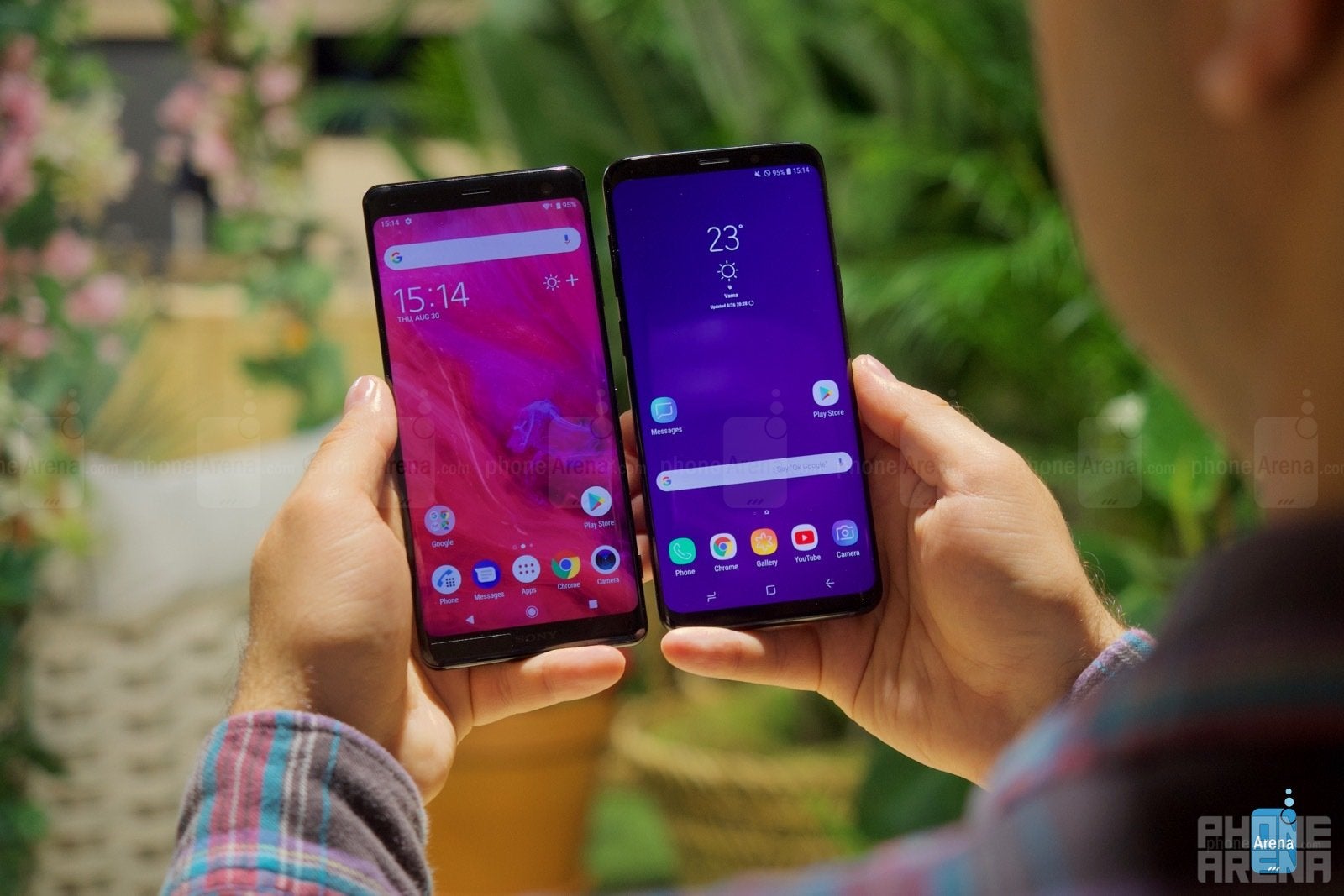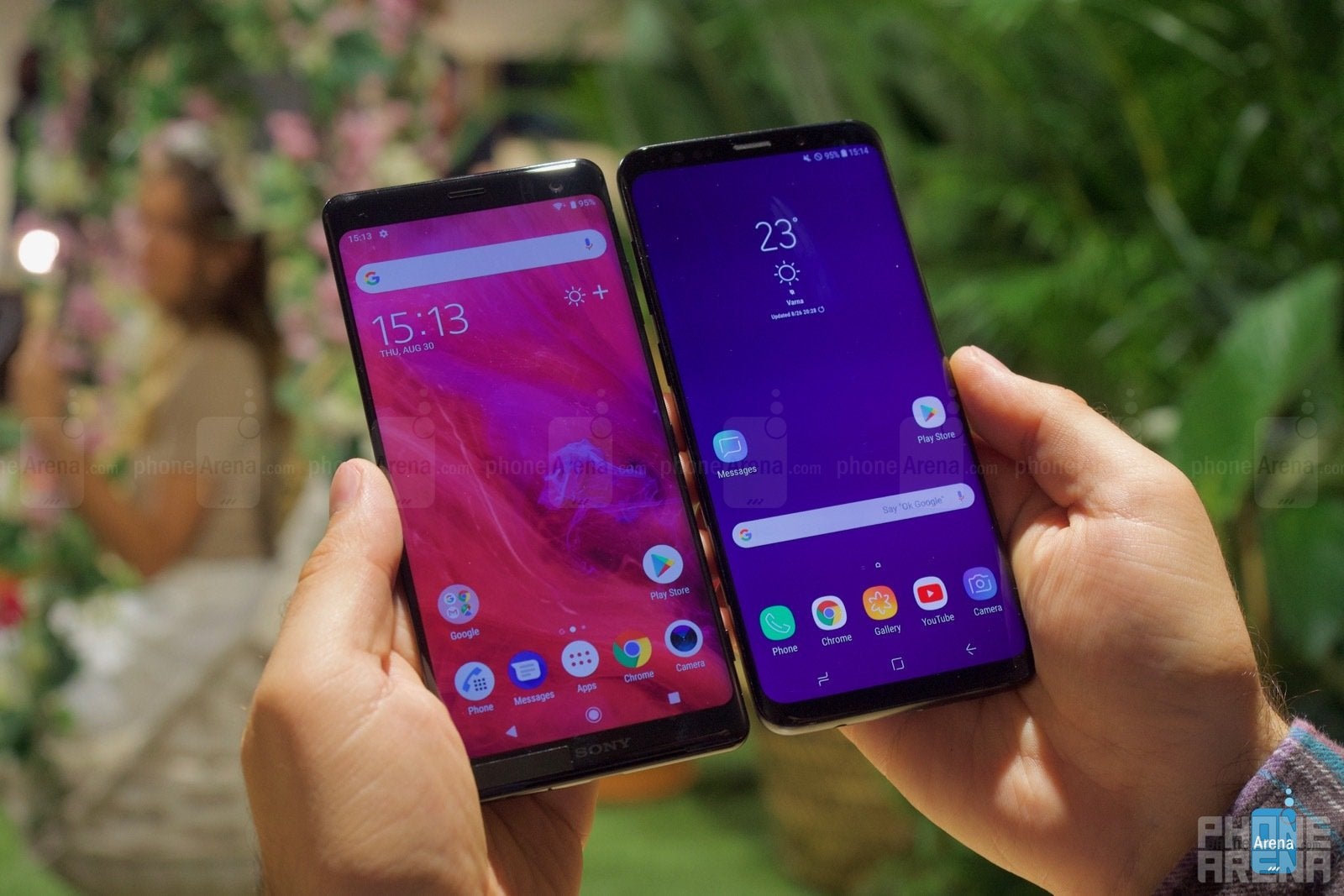Xperia XZ3 vs Galaxy S9+: will Sony outplay Sammy?

With that said, it's been six months since the Xperia XZ2, which means it's time for a new model! The Xperia XZ3 has just been announced to replace the XZ2, and while we don't get to enjoy a radically new design, there are a couple of important changes, which will surely make the phone that much more intriguing to consumers. The more important thing is that the XZ3 is also a lot more comparable to Samsung's own Galaxy S9+ now, which, together with the S9, is probably the most popular Android smartphone right now.
Design comparison
The XZ3 is now competitive, but not quite as convincing as it needs to be

After the major redesign that was the XZ2, Sony has now only refined a few things. For example, it's made the aluminum side frame thinner and more thoroughly polished, while the display has been made larger, almost without increasing the phone's dimensions. Almost. The Xperia XZ3 is one rather big phone, but pretty much comparable to the Galaxy S9 Plus. The bad thing is Sony is missing a more regular-sized version, which means its product will appeal to a more limited audience from the get go. Those looking for a relatively compact handset are left behind this time.
Also, while Sony's XZ3 design is all good and shiny, the Galaxy S9+ just looks more elegant and polished. Case in point, the volume, power, and largely redundant camera shutter keys on the XZ3 all feel somewhat sharp and not very pleasant to touch (and you'll be inevitably touching them when using the phone). Samsung's Galaxy S9 was a slight step back from the S8 in the ergonomics department, due to the new metal frame being a bit sharper on the edges, but it still has a pretty good in-hand feel.
Speaking of ergonomics, both handsets wear their fingerprint scanners on their backs, and while things are mostly OK, the positioning on the Xperia XZ3 may be tad too low for some users. Still, nothing one can't get used to.
The XZ3 and S9 Plus are two marvellous smartphones, that's for sure, but, if we have to name a winner in the design department, we'll have to side with the S9 Plus, which has the more elegant shape and thinner profile. The XZ3 tends to feel somewhat bulky and needlessly heavy.
Two amazing OLED displays
Sony switches to a higher-resolution OLED screen and it immediately shows
Arguably the biggest upgrade found in the Xperia XZ3 is the new OLED display. It has higher resolution than before, at 1440x2880 pixels, and let us tell you – this new screen is fantastic! Between the zero motion blur and amazing contrast and clarity, as well as all the optimizations Sony has done to ensure the color profiles will look great, this is one screen that can easily rival the one on the Galaxy S9 Plus, which has pretty much the same properties.
The one on the XZ3 measures 6 inches, which is a bit higher than the S9's 5.8" and a bit lower than the S9 Plus' 6.2". Like on the Galaxy S9 series, the OLED display on the XZ3 is also slightly curved around the edges. Like Samsung in the early days of its curved screens, Sony is trying to tie some special functionality around the curved edges of the XZ3, but mostly fails. Here's why...
Interface: no huge surprises, and a tiny Sony flop

In terms of appearance and core functionality, the software running on the Xperia XZ3 is largely the same as on the XZ2 – nothing interesting to talk about.
However, there are a couple of new features worth mentioning. One of the is Side Sense. So, apparently Sony's been a bit too excited to get the snazzy, curved OLED screen, that it decided to try and devise some sort of special functionality around it. Remember Samsung's Edge UX? Sorry to remind you about this one! Well, Sony's Side Sense is potentially worse.
You trigger side sense, which is a 3 by 3 grid of app icons by double tapping somewhere along the edges of the phone. If done correctly, this brings the grid of apps up, and the idea is the phone is going to suggest the right apps to you depending on your recent usage habits. It's not a new idea, but the problem is during our short time with the Xperia XZ3, this same panel happened to pop up a couple of times without us wanting to engage it. Meanwhile, it didn't pop up at least a few times when we did try to activate it by double tapping along the edges. So this is shaping up to be one of those features where there isn't much benefit, but the cost is definitely high as it may interfere with your normal usage. Thankfully, there is an option to turn it off.
Thankfully, it seems like Samsung has already outgrown such gimmicks and has been focusing on more integral phone features like design, ergonomics, and camera. It's not like Samsung's software is flawless. Most importantly, it continues to experience certain performance issues, but all in all, it's solid. It has a unique look, which is very user-friendly and approachable, and it also has all the Samsung-specific services built in. If you're feeling adventurous, you can replace most of the services you use in your digital life with their equivalents from the Samsung ecosystem, but... to be honest, this probably won't be a very smart idea. Certain Samsung apps are good, though!
Same Sony camera, and another doomed feature

The camera that you'll find on the XZ3 is the same as on its predecessor: a 19 MP unit with F2.0 fixed aperture. It is a fine single camera that can do HDR video recording and some other fancy stuff, like 960fps slow-motion clips. The new thing here is the camera interface, which has been simplified to only present you with the most essential options from the get go. The more advanced stuff like different modes, settings and fine tuning is still available, of course – you just need to dig a bit deeper in the menu structure.
And now for the promised doomed feature. Sony claims it's worked hard to be able to detect the user's intention to take a photo. So, it'll detect when you take the phone out of your pocket and hold it in landscape orientation in a way that suggests that you want to take a picture of something. At this point, it'll automatically run an special photo-taking interface, allowing you to hit the camera shutter, and thus quickly take a photo without having to launch the camera app yourself first. In theory, it's good. In reality, it will probably not be too reliable, as most similar motion-based features have turned out to be. Obviously, we're yet to properly test the phone, so hopefully we'll be proven wrong, but until then, we'd remain skeptical of how well this is going to work.
The Galaxy S9 Plus has a tried and true 12 MP dual camera that tends to be a bit more exciting. In addition to being an extremely powerful shooter in pretty much all kinds of conditions, it also lets you take snazzy portrait photos and use optical zoom, which is a whole new level of pocket photography. If also has the fancy dual aperture feature, allowing it to vary between F1.5 and F2.4 for more optimal settings for daylight and low-light photos. Overall, it's a very nice and advanced camera module by Samsung that you can't go wrong with.
Expectations
Sony fans will love the XZ3, but the Galaxy S9+ makes a stronger case

The Sony Xperia XZ3 is a rad phone. Despite some issues in the ergonomics department (bulky dimensions and sharp buttons), it's still an elegant and definitely good-looking phone. Also, the colors it's available in are amazing. To its list of welcome features we can add Android 9 Pie out of the box, which is cool, as well as a slightly bigger battery from the XZ2 (from 3180mAh to 3330mAh).
That said, the Galaxy S9 Plus has been out on the market for quite some time now, and it is expected to start getting Android 9 not too long from now. It has a generous 3500 mAh battery and is too good of an Android phone to pass.
Let's talk pricing! Sony has announced that the Xperia XZ3, which will be available unlocked on the US market, will cost $900. That's a hefty price! It's not different from what Samsung charges for the Galaxy S9+, which is sold through carriers at around $915-930 (but can be gotten cheaper on Amazon, with US warranty). You can get the Galaxy S9+ with monthly payments through carriers, though, and it's this collaboration between Samsung and US carriers that can sweeten the deal for the American consumer. This is something that Sony has traditionally struggled with, which means that simply getting an Xperia XZ3 in the States will be a bigger ordeal than it needs to be.
Either way, this probably won't stop loyal Sony fans from getting the XZ3, and how can we blame them? The Xperia XZ3 is a fantastic smartphone with few faults. If we had to put our own money on a new smartphone right now, though, and it had to be one of these, we'd probably have gone with the Galaxy S9+, because of the better design, same fantastic OLED screen, fancy dual camera, and the plethora of apps, services and features that Samsung offers.

Follow us on Google News












Things that are NOT allowed:
To help keep our community safe and free from spam, we apply temporary limits to newly created accounts: